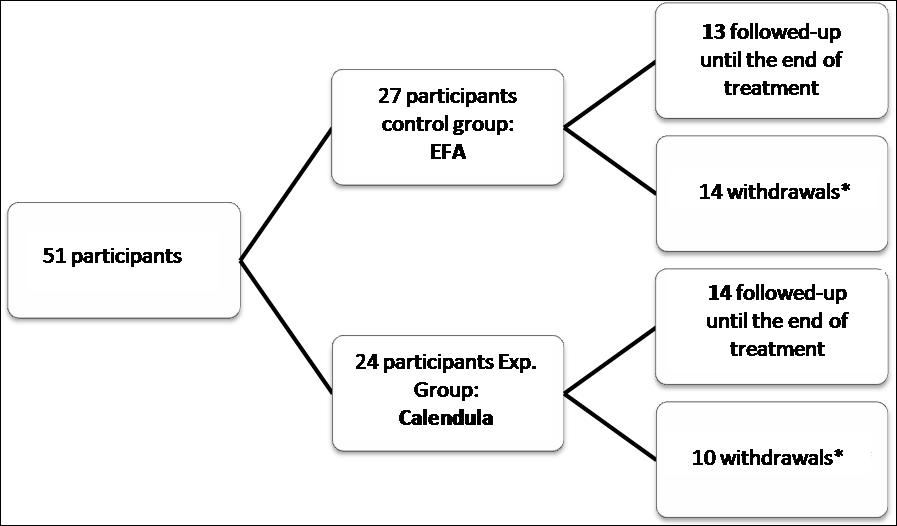OBJECTIVE
To evaluate the efficacy of Calendula officinalis in relation to Essential Fatty Acids for the prevention and treatment of radiodermatitis.
METHOD
This is a randomized double-blind controlled clinical trial with 51 patients with head and neck cancer in radiotherapy treatment divided into two groups: control (27) and experimental (24).
RESULTS
There is statistically significant evidence (p-value = 0.0120) that the proportion of radiodermatitis grade 2 in Essential Fatty Acids group is higher than Calendula group. Through the Kaplan-Meier survival curve we observed that Essential Fatty Acids group has always remained below the Calendula group survival curve, due to the lower risk of developing radiodermatitis grade 1, which makes the usage of Calendula more effective, with statistical significance (p-value = 0.00402).
CONCLUSION
Calendula showed better therapeutic response than the Essential Fatty Acids in the prevention and treatment of radiodermatitis. Brazilian Registry of Clinical Trials: RBR-237v4b.
Calendula; Radiodermatitis; Clinical Nursing Research; Oncology Nursing; Clinical Trial




